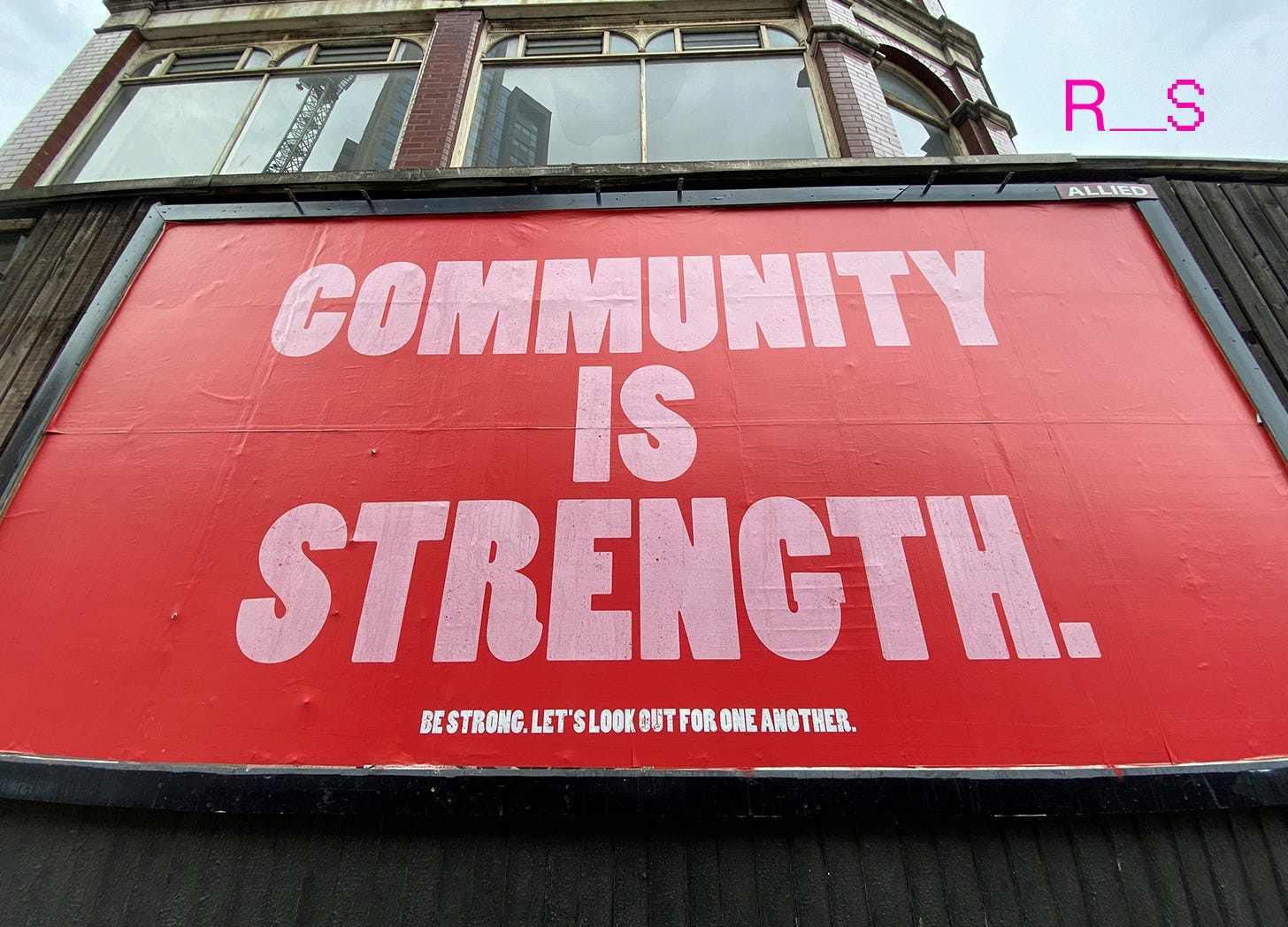Individual Resilience vs. Community Resilience
Understanding the overlap and differences between personal and collective resilience.
As explained in the Reality Studies Resilience Manual, resilience operates at individual and community levels. This quick piece differentiates the two at a high level—for a deeper dive, check out some of the other posts in the RSRM, for example:
Psychological Resilience and the Benefits of Resilience Counseling
Given *gestures at everything*, few topics feel quite as relevant as resilience. This spring, I’m building out what I’m internally referring to as the “Reality Studies Resilience Manual,” a series of explainers and analysis that hopefully helps readers understand the basics and why it matters in 2025 and beyond.
Individual resilience pertains to your capacity to navigate personal challenges, while community resilience refers to the collective ability of groups to withstand, recover from, and adapt to future crises. Of course, there’s overlap here; understanding the interplay between these two forms of resilience is crucial for fostering truly robust systems capable of enduring and even thriving in the polycrisis.
Individual Resilience: The Personal Journey
Individual resilience refers to the psychological ability to cope with and adapt to significant stressors or adverse events. It involves a dynamic process wherein individuals use personal resources, skills, and coping strategies to maintain or regain mental health. Key characteristics of resilient individuals include:
self-awareness
self-regulation
self-sufficiency and perseverance
problem-solving abilities
the presence of a supportive social network
While different people will have varying degrees of innate traits conducive to resilience, it is also a mental skill that can be trained.
Community Resilience: Collective Strength and Adaptation
Community resilience, on the other hand, pertains to the sustained ability of a community to utilize available resources to respond to, withstand, and recover from adverse situations. It involves collective efforts to ensure that infrastructure, public services, and social networks remain functional during and after crises.
Elements contributing to community resilience include:
local knowledge, community networks, and relationships
open communication (and channels for it).
governance, leadership, and commitment to community
economic investment in robust infrastructure and preparedness
A great example of a resilient community is Kahikinui in Hawaii. Following the devastating Lahaina Fire, they introduced the ‘Firewise’ program to mitigate future wildfire risks. Residents collaborated with organizations to clear waste, create defensible spaces around homes, and develop emergency response plans.
Interconnection and Mutual Reinforcement
Individual and community resilience operate at different levels, but they are (obviously!) deeply interdependent. The resilience of individuals contributes to the overall resilience of the community, and a resilient community provides a supportive environment that fosters individual resilience. Set, repeat. Research indicates that factors such as social support and community cohesion play significant roles in enhancing individual resilience.
In the aftermath of the 2022 floods in Lismore, Australia, for example, South Lismore Public School implemented the MacKillop Seasons Stormbirds program to support students who had experienced trauma. This initiative not only aided individual students in developing coping mechanisms but also strengthened the school's communal bonds, illustrating the reciprocal relationship between individual and community resilience.
The Reality Studies Resilience Manual is rolling out a bunch of new pieces in the coming days and weeks—some of which are only available to free or paid subscribers. Subscribe now so they come straight to your inbox!





fun article; do you have example of hyper local community resilience? I became more interested in this topic after thinking about how it's hard to build communities these days and Im wondering what actions I can take to help foster that culture within my friend groups and their friends. I'd absolutely love to hear your thoughts!